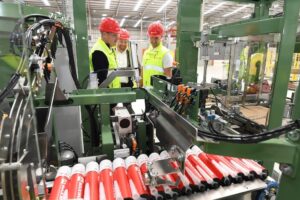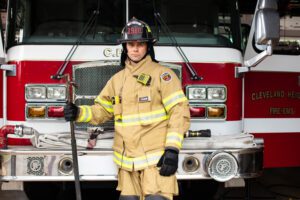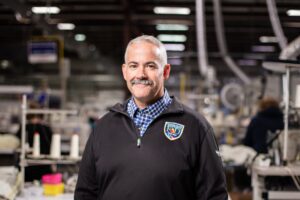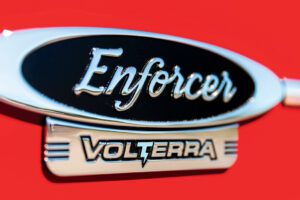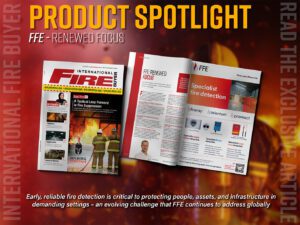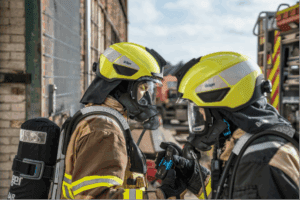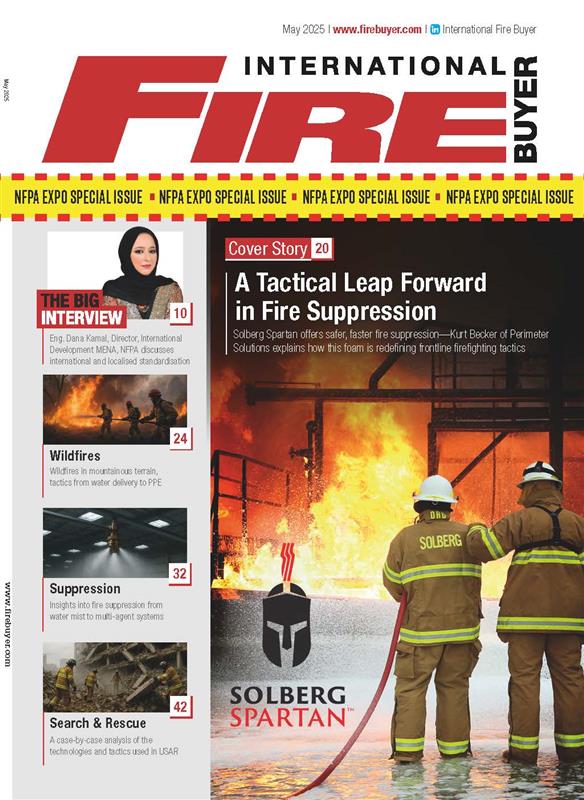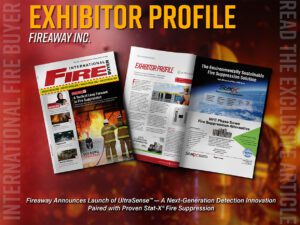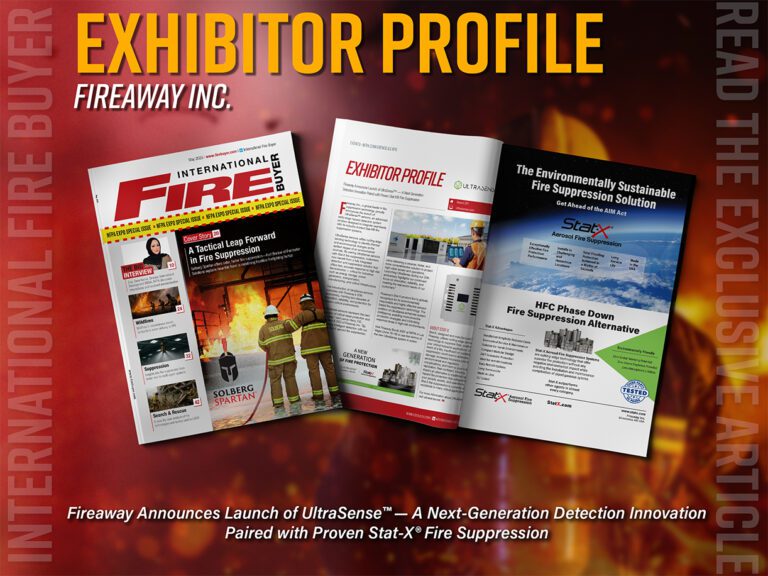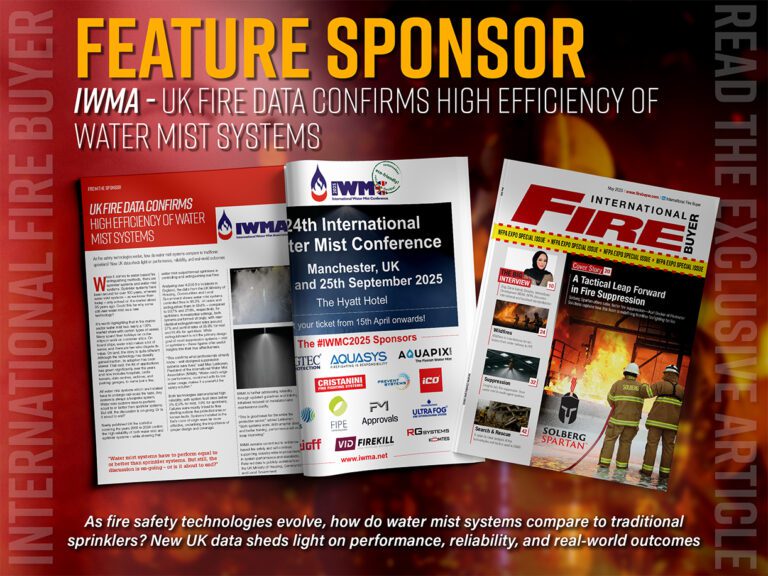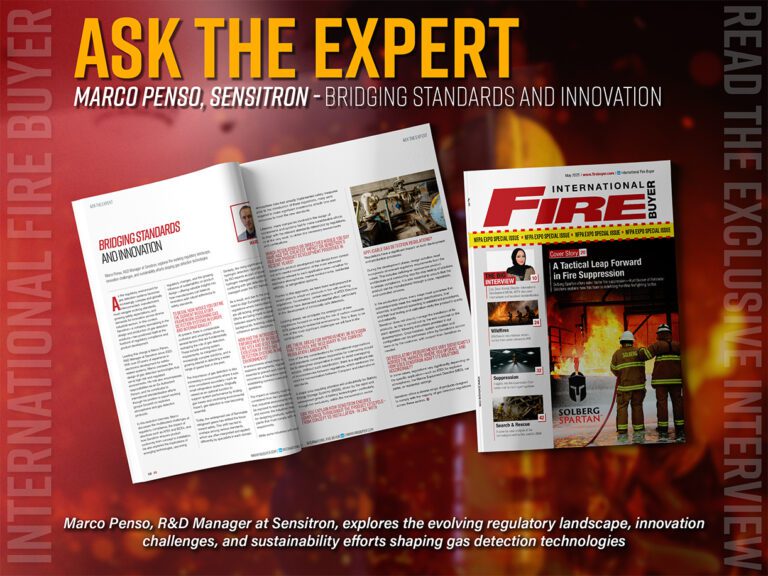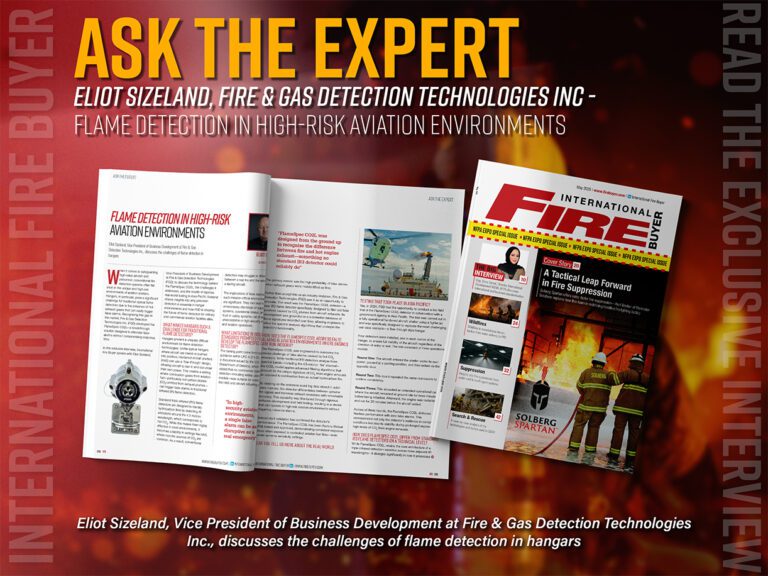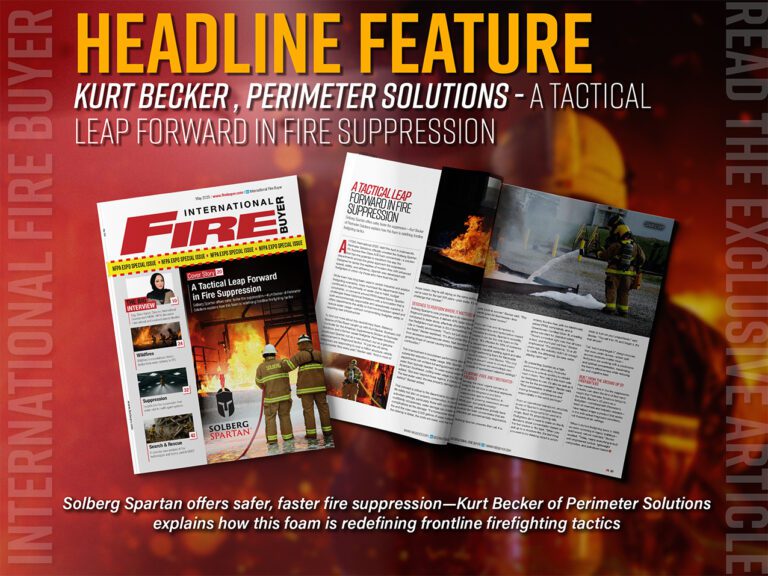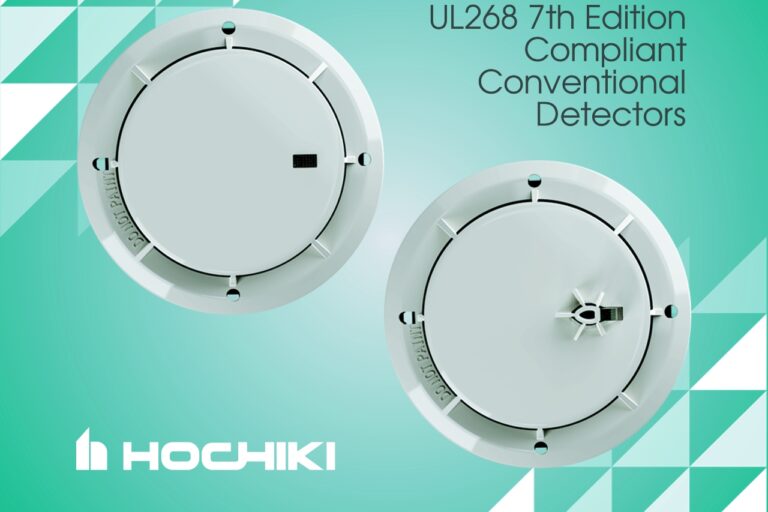George Michael Bio, International Business Development Manager for FirePro presents the Condensed Aerosol Systems that will be available at Intersec and the important considerations
Condensed aerosol technology gained popularity in the 90’s due to the phase-out of Ozone-depleting substances – a result of the Montreal Protocol enforced on January 1, 1989. With almost three decades of worldwide use, the technology is regulated according to international standards and guidelines, such as the UL 2775, NFPA 2010, EN15276, ISO15779, VdS regulations, LPS 1656, LPS1204 Issue 3.2, BRLK23001, and IMO MSC.1 / Circ.1270 for Sea Going Vessels under SOLAS74.
Alike conventional gas suppression systems, Condensed Aerosol is classified as a Total Flooding agent. For system design and installation, the physical and technical parameters of the protected area, such as the class of fire, volume and height need to be taken into consideration. However, unlike its gas counterparts, the efficiency of fire suppression using condensed aerosol lies predominately in interrupting the chemical chain reactions occurring within the flame, rather than cooling or depleting the oxygen content in the protected enclosure.
Upon detection and confirmation of a fire, the solid aerosol forming compound contained within the generators, transforms from a solid state into a rapidly expanding two-phase fire suppression agent, consisting of potassium carbonate (K2CO3) – the active agent – as particulates of size smaller than 10 μm suspended in a gaseous blend. The gas-type 3D properties of condensed aerosol facilitate its even distribution in the protected volume, as well as its flow into the natural convection currents of combustion.
System Components
A fire suppression system consists of several components that work together to detect, extinguish and/or control fires. The fundamental elements include a detection system, responsible for identifying the presence of a fire, a control panel that orchestrates the system’s operation, and various alarm devices to alert occupants and other systems.
Expanding on the foundational elements of condensed aerosol fire suppression systems, the core components are the pre-engineered, non-pressurised generators. When activated, these generators release the designed amount of fire suppression agent in the enclosure. The Aerosol generators are an all-in-one device and are the equivalent of the agent/cylinder, piping and nozzles of conventional gaseous systems. The quantity and model of generators to be used are determined by the agent density required, which differs from one manufacturer to another and is derived from fire suppression tests. These tests are defined in protocols set out by relevant standards such as UL2775, EN15276 part 1 and ISO15779, conducted by accredited bodies and listing Authorities.
Design Principles for Total Flooding Systems:
Designing a condensed aerosol system is regulated by engineering standards which also address the way these systems are installed, commissioned and maintained. Such standards are EN15276 part 2, ISO15779 and NFPA 2010. For the system to be compliant to these standards, all components must be certified, approved or listed.
Below are the main considerations for a designer applying the requirements of NFPA 2010 standard as an example.
Agent Quantity calculation
Condensed aerosol systems are simple to design without the need for complex hydraulic calculations. To determine the mass of aerosol-forming compound i.e. the total flooding quantity required, in the absence of special conditions that would affect the extinguishing efficiency, one needs to take three factors into consideration:
1)Volume m3 (V)
2)Design Application Density g/m3 (da )
3)Additional Safety factor (fa )
By multiplying the three variables, we can derive the total solid mass (m) of condensed aerosol required: m= da x fa x V
The number of generators required are then derived by dividing the total mass (m) by the amount of solid compound contained in the generator type selected.
Volume and integrity of the enclosure (V)
Defining the fire boundaries is the initial step when dealing with any total flooding fire suppression system. Boundaries must be physical objects capable of withholding the agent at the required concentrations for the 10-minute minimum Hold Time, as specified in all international standards.
Achieving the Hold Time requires the assessment for leakages on the fire boundaries. Condensed aerosol systems can tolerate small openings in the enclosure without the need for a door fan test to quantify the level of leakages, provided that a visual inspection offers sufficient insight of the room’s integrity. Openings can be kept to a minimum by either permanent sealing or with automatic closures. Condensed aerosol system manufacturers are required to provide specific calculations to determine if additional agent is required.
In standby mode, condensed aerosol systems are non-pressurised. Upon discharge, they do not significantly contribute to a pressure increase, considering their low discharge pressure, therefore pressure relief vents are not mandatory.
As previously mentioned, aerosol generators are self-contained devices that are installed within the protected enclosure at high level – either on walls, ceilings, or both and consequently do not require dedicated floor space. The positioning of the aerosol generators should be such to ensure a uniform distribution of the agent throughout the protected volume, along with ensuring the required minimum safety air clearances from personnel and combustible material. In the event of any alterations to the enclosure layout, the generators are versatile, allowing for easy repositioning as needed.
- Design Application Density g/m3 (da )
A fundamental step of the design stage involves the identification of the Fire Class within the enclosure. In many scenarios, the presence of a combination of fuels is common, and adhering to NFPA guidelines becomes crucial in designing an effective condensed aerosol fire suppression system. In cases of mixed fuels, NFPA recommends applying the highest Design Application Density.
The Design Application Density can vary among different fire classes. It includes the Extinguishing Application Density, derived from fire suppression test protocols as defined by the UL2775 standard, and incorporates an additional 30% safety factor.
It is important to note that each aerosol manufacturer has a different extinguishing application density resulting from the engineering differences of the generators as well as the chemical formulation of the solid aerosol forming compound.
- Additional Safety factor (fa)
In addition, the NFPA 2010 states that additional quantities of agent will be provided through the use of additional design factors to compensate for any special conditions that would affect the extinguishing efficiency.
Other factors which need to be taken into consideration during the design stage are Space Occupancy and Post activation Measures.
Space Occupancy
A common misconception is that all condensed aerosols are the same, but this is far from the truth. In fact, one may generalise that aerosols are well suited for industrial type applications (non-occupiable spaces and normally unoccupied spaces) but a select few are also approved for use within normally occupied spaces. Approval can be verified through competent agencies such as the United States Environmental Protection Agency (EPA). However, even though an aerosol may be approved for normally occupied spaces by the EPA, the use of safety mechanisms must be incorporated into the design, to prevent or reduce the likelihood of persons being exposed to an unintentional discharge. Typical safety mechanisms that must be used are the Auto/Manual key switch, an Isolation switch, an Abort switch, count-down timer delay and other warning devices.
Never miss a story… Follow us on:
International Fire Buyer
@Firebuyer
Fire Buyer
Media Contact
Rebecca Spayne Managing Editor, International Fire Buyer
Tel: +44 (0) 1622 823 920
Email: [email protected]

